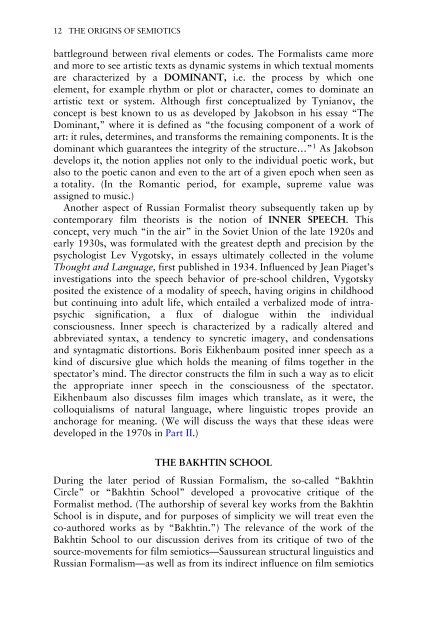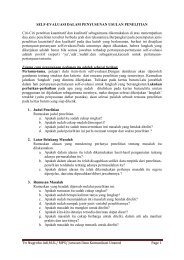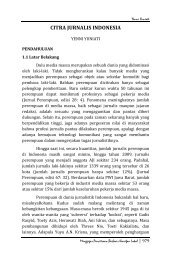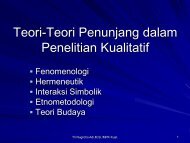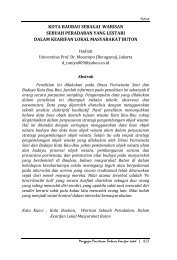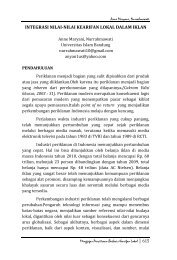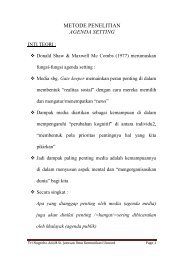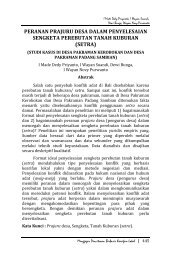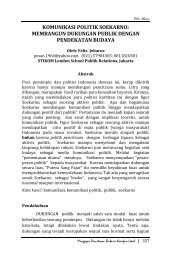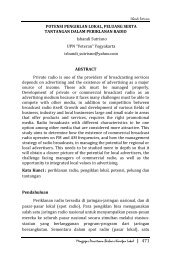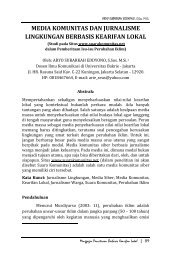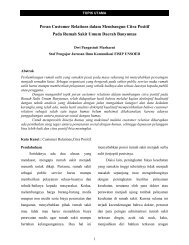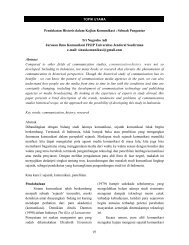New Vocabularies in Film Semiotics
New Vocabularies in Film Semiotics
New Vocabularies in Film Semiotics
Create successful ePaper yourself
Turn your PDF publications into a flip-book with our unique Google optimized e-Paper software.
12 THE ORIGINS OF SEMIOTICS<br />
battleground between rival elements or codes. The Formalists came more<br />
and more to see artistic texts as dynamic systems <strong>in</strong> which textual moments<br />
are characterized by a DOMINANT, i.e. the process by which one<br />
element, for example rhythm or plot or character, comes to dom<strong>in</strong>ate an<br />
artistic text or system. Although first conceptualized by Tynianov, the<br />
concept is best known to us as developed by Jakobson <strong>in</strong> his essay “The<br />
Dom<strong>in</strong>ant,” where it is def<strong>in</strong>ed as “the focus<strong>in</strong>g component of a work of<br />
art: it rules, determ<strong>in</strong>es, and transforms the rema<strong>in</strong><strong>in</strong>g components. It is the<br />
dom<strong>in</strong>ant which guarantees the <strong>in</strong>tegrity of the structure…” 1 As Jakobson<br />
develops it, the notion applies not only to the <strong>in</strong>dividual poetic work, but<br />
also to the poetic canon and even to the art of a given epoch when seen as<br />
a totality. (In the Romantic period, for example, supreme value was<br />
assigned to music.)<br />
Another aspect of Russian Formalist theory subsequently taken up by<br />
contemporary film theorists is the notion of INNER SPEECH. This<br />
concept, very much “<strong>in</strong> the air” <strong>in</strong> the Soviet Union of the late 1920s and<br />
early 1930s, was formulated with the greatest depth and precision by the<br />
psychologist Lev Vygotsky, <strong>in</strong> essays ultimately collected <strong>in</strong> the volume<br />
Thought and Language, first published <strong>in</strong> 1934. Influenced by Jean Piaget’s<br />
<strong>in</strong>vestigations <strong>in</strong>to the speech behavior of pre-school children, Vygotsky<br />
posited the existence of a modality of speech, hav<strong>in</strong>g orig<strong>in</strong>s <strong>in</strong> childhood<br />
but cont<strong>in</strong>u<strong>in</strong>g <strong>in</strong>to adult life, which entailed a verbalized mode of <strong>in</strong>trapsychic<br />
signification, a flux of dialogue with<strong>in</strong> the <strong>in</strong>dividual<br />
consciousness. Inner speech is characterized by a radically altered and<br />
abbreviated syntax, a tendency to syncretic imagery, and condensations<br />
and syntagmatic distortions. Boris Eikhenbaum posited <strong>in</strong>ner speech as a<br />
k<strong>in</strong>d of discursive glue which holds the mean<strong>in</strong>g of films together <strong>in</strong> the<br />
spectator’s m<strong>in</strong>d. The director constructs the film <strong>in</strong> such a way as to elicit<br />
the appropriate <strong>in</strong>ner speech <strong>in</strong> the consciousness of the spectator.<br />
Eikhenbaum also discusses film images which translate, as it were, the<br />
colloquialisms of natural language, where l<strong>in</strong>guistic tropes provide an<br />
anchorage for mean<strong>in</strong>g. (We will discuss the ways that these ideas were<br />
developed <strong>in</strong> the 1970s <strong>in</strong> Part II.)<br />
THE BAKHTIN SCHOOL<br />
Dur<strong>in</strong>g the later period of Russian Formalism, the so-called “Bakht<strong>in</strong><br />
Circle” or “Bakht<strong>in</strong> School” developed a provocative critique of the<br />
Formalist method. (The authorship of several key works from the Bakht<strong>in</strong><br />
School is <strong>in</strong> dispute, and for purposes of simplicity we will treat even the<br />
co-authored works as by “Bakht<strong>in</strong>.”) The relevance of the work of the<br />
Bakht<strong>in</strong> School to our discussion derives from its critique of two of the<br />
source-movements for film semiotics—Saussurean structural l<strong>in</strong>guistics and<br />
Russian Formalism—as well as from its <strong>in</strong>direct <strong>in</strong>fluence on film semiotics


